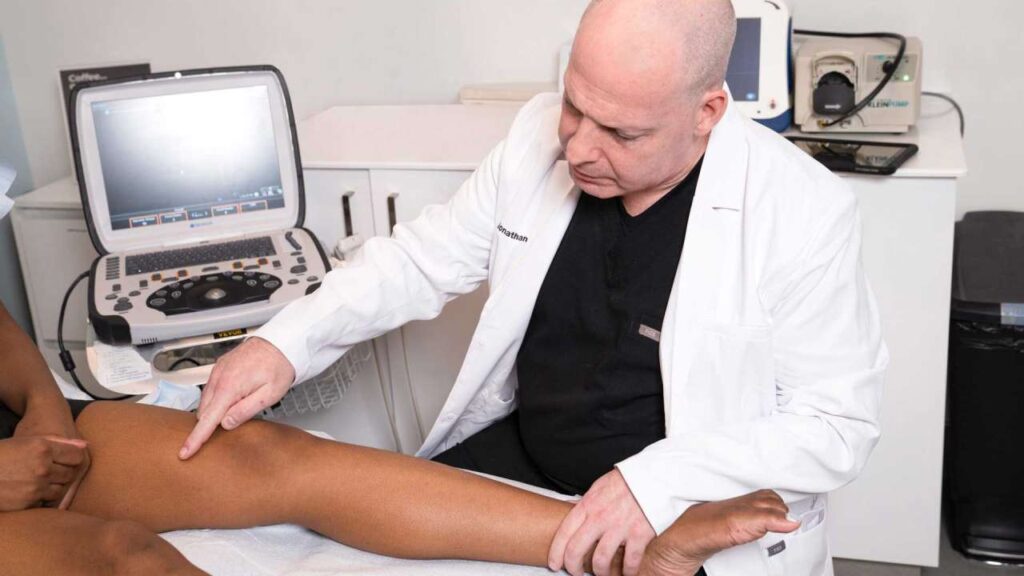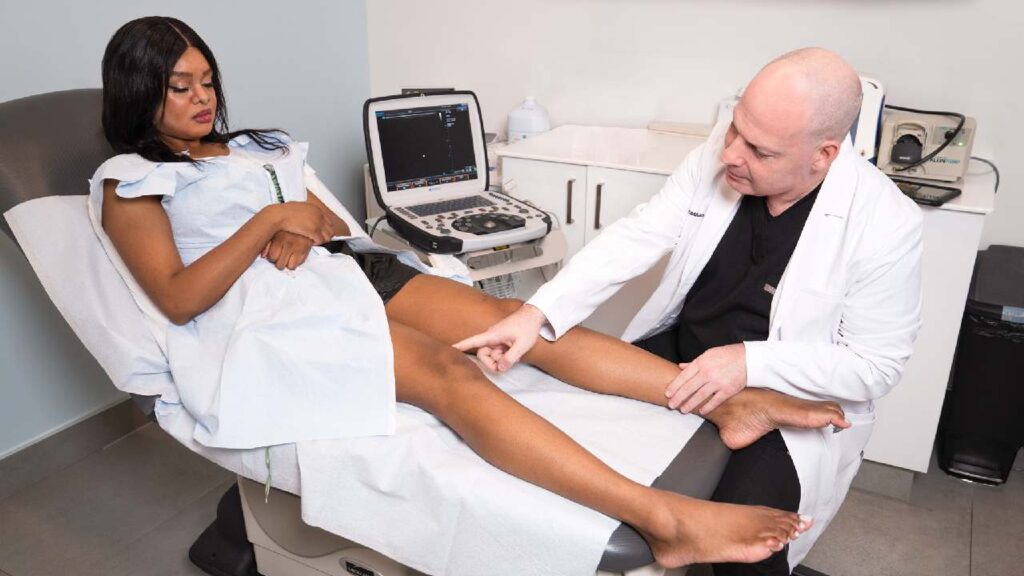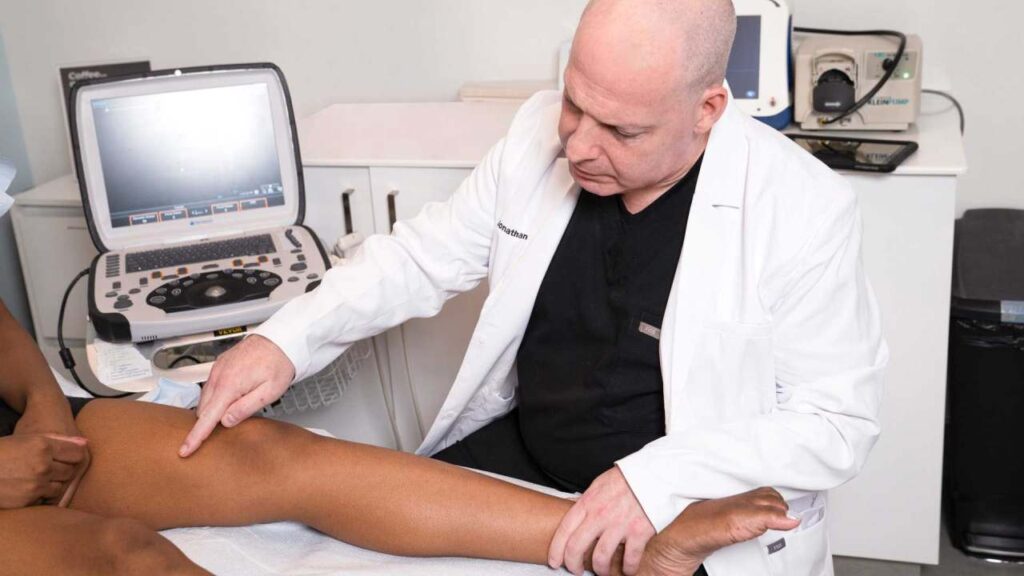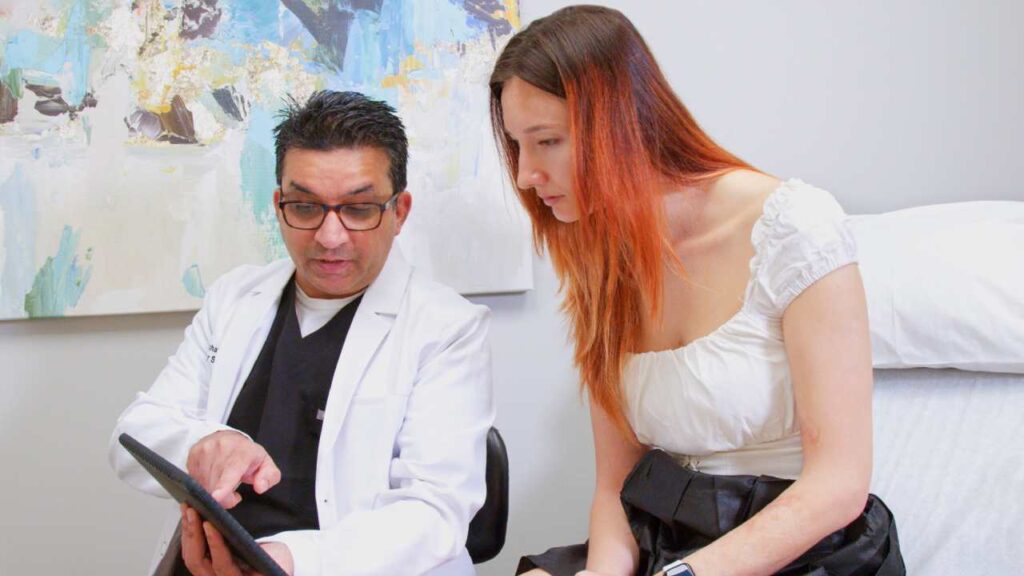If you’re suffering from vein disease and the complications that come with them, it’s time to make an appointment with a reputable varicose vein specialist. You can expect the highest standard of care from vein doctors at Vein Treatment Center New York. Click HERE to book an appointment at our excellent vein center, or keep reading to learn more about the signs and symptoms of vein damage.
1. Spider Veins
Spider veins are thin, measuring less than a millimeter in diameter, and resemble red, blue, or purple spider webs. Clusters can be found in the legs or on the face, but they are more common around the ankles, and they are accompanied by mild discomfort, itching, or burning.
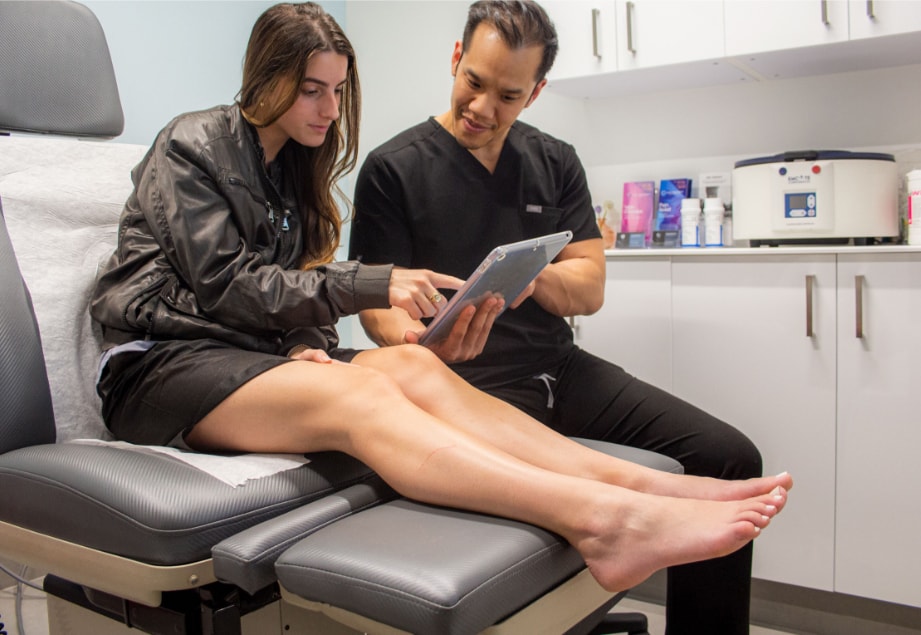
2. Varicose Veins
Varicose veins are bulging blood vessels that are dark purple, green, blue, or red. They appear twisted and distorted, in contrast to healthy veins, which run in a somewhat straight line. They are more than three millimeters in diameter and are commonly found on the legs, inner thighs, buttocks, and lower pelvic regions.
3. Fatigue/Edema
One-way valves in healthy veins allow blood to flow into the heart while preventing it from returning to the limbs. When vein valves in the legs begin to leak, gravity pulls blood back down, causing it to pool in veins in the lower limbs and leading to chronic venous insufficiency. Because of fluid buildup, the venous system may be unable to return blood to the heart, and pressure on the vein walls increases with time, resulting in the bulging varicose veins you may be noticing.
Vein illness can produce heaviness or pain, particularly at the end of the day when you have been active, allowing more blood to flow down and pool in the legs. This causes leg fatigue as well as swelling in the feet or ankles.
4. Bleeding
When varicose veins are visible and the skin above them is stretched thin, even the slightest bump or scratch can result in profuse bleeding. If your varicose veins begin to bleed, lie down and elevate your legs above your heart, applying gentle pressure to ensure that blood flows away from your legs and back to your heart.
If the bleeding does not stop within 1-2 minutes, proceed to the emergency room, and as soon as the bleeding stops, arrange an appointment with a varicose vein doctor at a vein treatment facility.
5. Skin Conditions
Some of the most frequent skin problems caused by vein damage are eczema, lipodermatosclerosis, and leg ulcers.
- Eczema: The skin around wounded veins becomes red and scaly when it gets inflamed. The skin might become itchy and irritating as a result of a buildup of hemosiderin, a dark red pigment produced by injured blood cells that seep out of veins.
- Lipodermatosclerosis: Scarring of the subcutaneous tissue beneath the skin caused by vein injury and a loss of blood supply in the area. It has the potential to cause long-term damage, hyperpigmentation, and skin rigidity.
- Ulcers: These develop when blood pools in the lower extremities, placing pressure on vein walls and causing skin rupture. A lack of blood circulation to the area causes
6. Deep Vein Thrombosis
The most severe outcome of untreated vein disease is deep vein thrombosis (DVT). DVT begins as superficial vein thrombosis, which occurs when blood clots form within large varicose veins, but they can travel to deep veins as they dislodge and expand.
When a clot scrapes down the edges of blood vessels, it can cause severe damage to the vein walls. The clot could travel to the lungs and cause a potentially fatal pulmonary embolism.
Many people believe that all of these signs and symptoms are just part of aging, which may be true if you see a few spider veins here and there, but major areas of the skin covered in spider veins or varicose veins, as well as other associated conditions, is obviously suggestive of an underlying vein condition. The good news is that venous disorders are treatable!
The vein doctor may offer you three options, depending on your specific condition: VenaSeal, varithena, and radiofrequency ablation are among procedures that can be used. All of these treatment methods effectively shut off any problematic veins that are causing blood flow issues in order to redirect blood through good veins. They are all relatively painless and take less than a half-hour. Because there is no anesthetic or recuperation time required, you can go home or back to work immediately following the vein treatment clinic operation.
It’s important to find a vein doctor who is trained in minimally invasive procedures so that you can be sure that you are receiving the highest standard of vein care. Our vein center in NYC is accessible by both Grand Central Station and Penn Station and is close to major landmarks such as the Empire State Building. The Vein Treatment Clinic New York has physicians who are passionate about your well-being and who can consult with you to help you heal. If you are ready to finally get treatment for your vein disease, check out the Vein Treatment Clinic for vein treatment today!
